Rand Wang, Year 2 Engineering.
Abstract
Coffee is a staple drink across the world. With the large amounts of coffee production, comes large amounts of used coffee grounds disposed of. Through this project, used coffee grounds were put to use as fertilizer in an attempt to create a renewable fertilizer. To test the effect of the fertilizer on plant growth, nine plants of Ocimum Basilicum (Basil) were separated into three groups. One group with coffee ground applied as a soil amendment, one group with coffee ground applied using the foliar feeding method, and one control group with no coffee ground applied. All plants grown in pots and indoors. Results noted particular growth deficiencies in plants under the foliar feeding method. However, results also proved that coffee ground fertilizer through soil amendment benefits plant growth. Hence, applying used coffee grounds as fertilizer should certainly be considered, especially around household plants.
Introduction

Figure 1: Optimal growth environment for rapid germination rate
In 2015, a survey recording total coffee per person consumption in food service joints ranked Canada first out of 80 countries (Euromonitor, 2016). Notably, Canada tallies an average consumption of 2.9 cups of coffee per person in a day (Bedford 2020). In addition, the global coffee industry expands yearly. Accordingly, in 2019, the world produced a record of 169 337 bags of 60 kg of coffee (ICO 2020). Consequently, this massive coffee production leads to large deals of used coffee grounds disposal.
Used coffee grounds are considered a potential threat to the environment if not disposed of properly. Used Coffee grounds can release methane to the atmosphere, which contributes to the global issue of climate change (Caetano et al. 2012). Applying used coffee grounds as a fertilizer has been researched before, but has perpetually remained a subject of debate. Some scientists claim coffee ground fertilizer (CGF) will cause the soil to be too acidic and weaken plants (Hardgrove et al. 2016). Other researchers believe the addition of CGF provides many essential nutrients like nitrogen, carbon, phosphorus, and magnesium to the soil that make it more fertile for plants (Crumbley 2009). Research also shows that used coffee grounds may act as a pesticide to repel pests (Crumbley 2009). Past research has tested used coffee grounds in plant soil for water and heat retention (Oregon State University 2008). In this project, different methods of used coffee ground applications were evaluated. In addition, the quantity of used coffee ground added to eventually build the optimal growth environment for plants was also investigated (See figure 1). Ocimum Basilicum (Basil) is a very resilient, commonly seen, and quick growing herb (Correos et al. 2018). In addition to its fast growth, basil is also positively affected by nitrogen, which is heavily present in CGF (Matsumoto et al. 2013). Thus, for the purpose of this experiment, Ocimum Basilicum was chosen as the plant to grow.
This study also investigates common fertilizer methodologies: soil amending and foliar feeding. Soil amending is a traditional method of fertilizer application used to improve soil quality (Maiti and Ahirwal 2019). This allows plants to transport nutrients and water through their xylem tissue (McElrone et al. 2013). Diversely, foliar feeding is a fertilizer application method that sprays a concoction onto the leaves of the plants (Patil and Chetan 2018). This growingly popular fertilizer application method has proved to be controversial (Global Industry Analysts 2020). Researchers assert the method is effective because plants may obtain essential nutrients in liquid form through leaf pores called stomata (Patil and Chetan 2018). Furthermore, more research has recorded increased growth rates in plants with fertilizer applied through foliar feeding (Rahman et al. 2014). Contrarily, many affirm that nutrients are naturally transported through the roots of the plant and that nutrients cannot be absorbed efficiently otherwise. (Rouached and Tran 2015).
In order to gather the necessary results for this study, the following questions are to be answered: How does coffee ground fertilizer affect plant growth in terms of soil layers, soil pH level, plant biomass, leaf length, and plant height? What method of coffee ground application will be most beneficial for growth? Soil amendment, or foliar feeding?
The results of this study would not only provide farmers with an alternative fertilizer that acts as an insecticide; instead of using manure, or chemical fertilizers that often contain harmful pathogens (Manyi-Loh et al. 2014). But the results of this study would also contribute to creating leads behind the controversy of fertilizer applications, specifically foliar feeding.
The scope of this project will be limited by only using one brand, and one brew of coffee (Starbucks, medium roast). It will also only be using one type of potting soil (Promix premium potting mix). Likewise, having only one variable, and having only one kind of plant will limit possible side effects that may acquire in the experiment. Its main purpose is to target the common controversy behind used coffee grounds application methodologies and deduct possible rationales to reduce landfill magnitude.
Materials and Methods
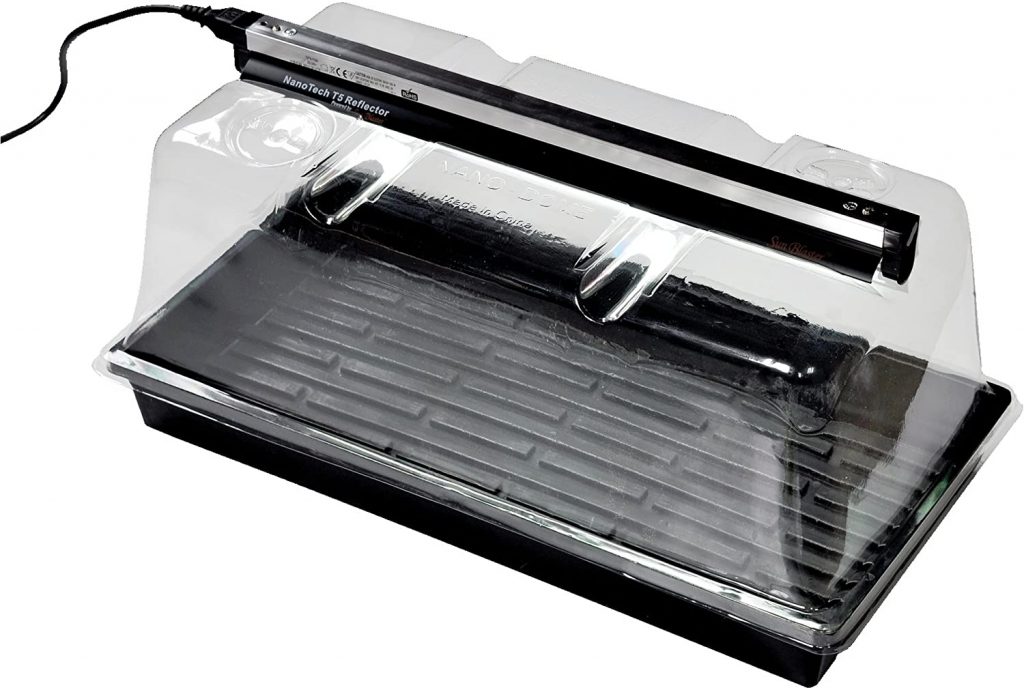
Figure 2: SunBlaster 1600205 Mini Greenhouse Kit with 18″ TSHO, 7″ Nano Dome, Heavy Duty Tray
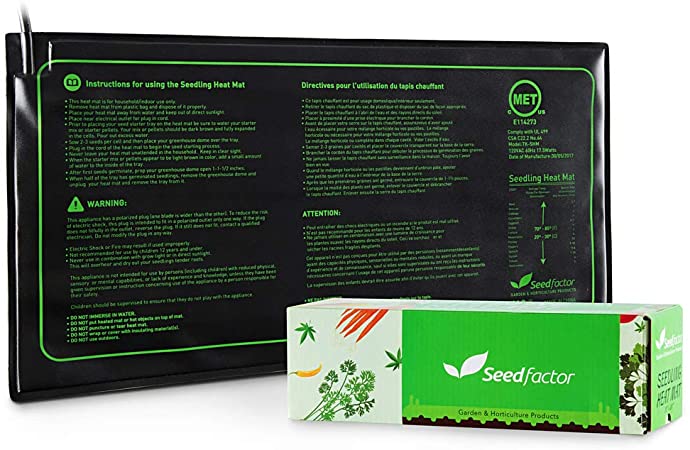
Figure 3: Seedfactor Waterproof Durable Germination Station Heat Mat, Warm Hydroponic Heating Pad for Indoor Home Gardening Seed Starter 10″ X 20″
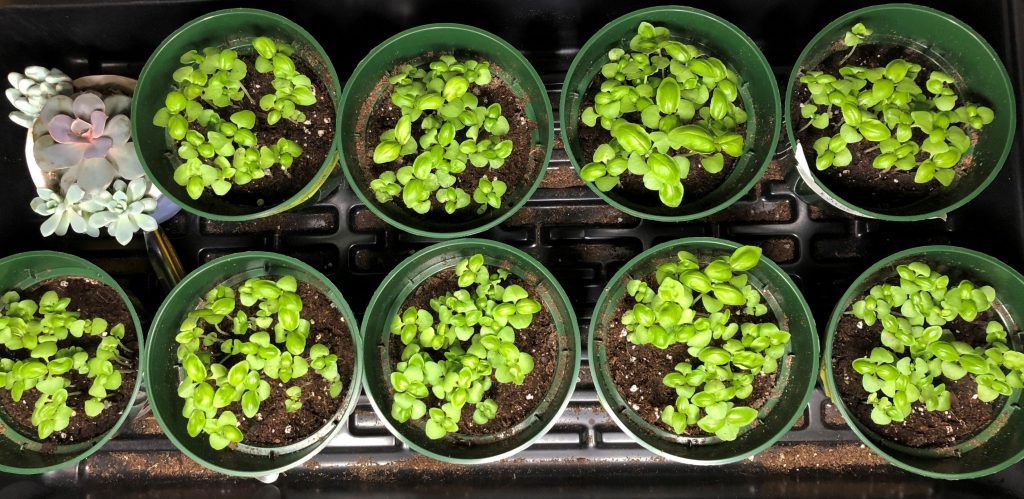
Figure 4: Growth Progress on day of CGF application (February 17, 2020)
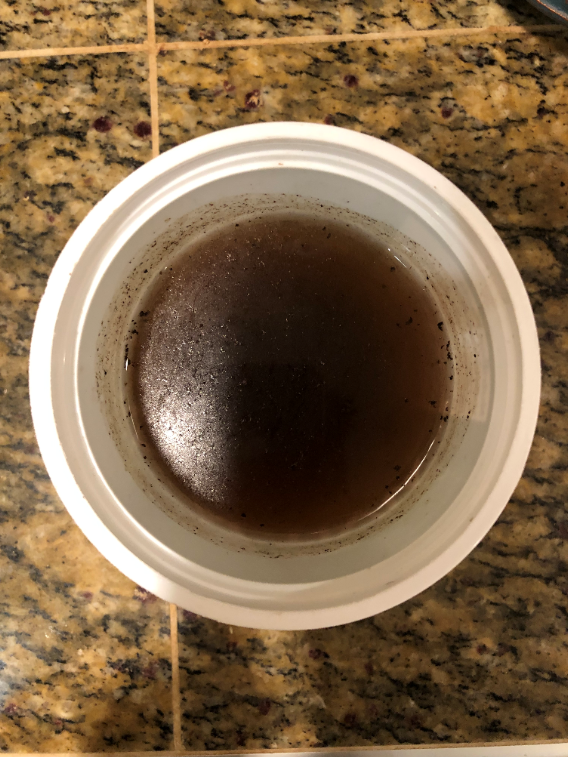
Figure 5: Coffee ground “tea” created by coffee ground and water
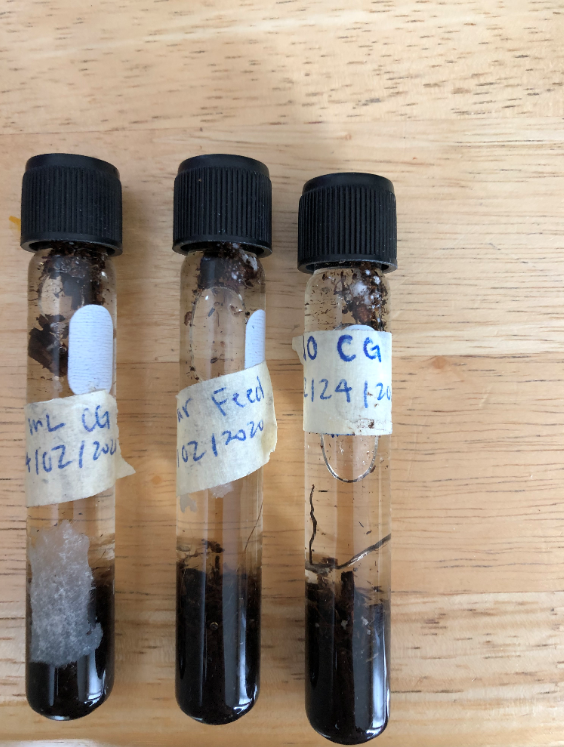
Figure 6: Separate soil test taken from the three groups
Used coffee grounds obtained from Starbucks Coffee, (Richmond Centre) were kept moist in a shady environment. 200 basil seeds (Ocimum Basilicum) were obtained from (West Coast seeds). For increased germination rate, a grow dome (SunBlaster 1600205 Mini Greenhouse Kit, Amazon) (see Figure 2) was assembled according to manufacturer’s instructions, and placed on a seedling heat mat, (Seedfactor Waterproof Durable Germination Station Heat Mat 10″ x 20″, Amazon) (see Figure 3). Potting soil (Promix premium potting soil) was scooped into nine 4.5” diameter pots (Touch of flowers). In order to control variables (light, moisture, temperature) the plants were incubated under the grow dome, the grow light was established, and the plants were placed on a heat mat. Before germination, the grow light on the grow dome was administered for 15 hours until light damage was noticed, which was at about 3 days post germination. Where the grow dome was removed and the original grow lights were replaced by 3 head LED grow lights (Djing Lite), which were switched to 6-7 hours per day. Once 3-4 leaves are present on each sprout, (see Figure 4), a mixture called “coffee ground tea” was created using a ratio of 49 ml of water : 1g of used coffee ground (figure 5). The mixture was allowed to sit for one day before applying to plants. The nine potted plants were separated into three groups of three pots of plants. One group with no coffee ground applied (group 1), one group with CGF applied by foliar feeding (group 2) and one group of three pots with 10 ml of CGF applied as a soil amendment (group 3). Each week, the following data were collected: soil layers, soil pH, plant biomass, leaf length, and plant height. The soil layers were measured by the use of a soil test (see Figure 6). Each sample took soil from all pots in the group, totalling three samples. The soil pH was measured using a soil meter (soil meter 3 in 1, Amazon). Plant biomass was measured using an electronic scale (Home science tools, FSL). Leaf length and plant height were measured using a metric ruler. Respectively, from the stem to edge of the largest leaf and from the soil to the peak of the plant.
Results
Figure 7: a log recording of the highest point of a plant, measured from base of soil to the tip of the plant
Figure 8: a log recording of the largest leaf on each respective plant. Measured from the stem to the edge of the leaf
Figure 9: Largest leaf length averages recorded per group
Figure 10: leaf burns shown on plants with applied CGF by the foliar feeding method
Figure 11: Plant height averages recorded per group
In this project, CGF had close to no significant effects on the growth of Ocimum Basilicum, in terms of biomass, soil layers and pH. However, there were considerable changes in plant height and leaf size between the 3 plant groups. (Figure 7) (Figure 8)
Throughout the 3 weeks where data was taken, group 3 had the largest leaf length average compared to any other group (Figure 9). Furthermore, in the last two sets of data, on Mar 9 and Mar 20, plant 1 and plant 2 of group 3 held the top 2 leaf sizes out of all the plants (Figure 8). Contrarily, group 2 started with the smallest leaf length average in the first set of data on Feb 24, but grew to have the second largest leaf length average in the third set of data by Mar 20 (Figure 9). In addition, the three plants in the group shared very similar leaf lengths, with the biggest data difference between two leaves being only 0.5cm (Figure 8). However, there were also signs of leaf burns on the plants in group 2 (Figure 10). Unexpectedly, group 1 did not fall very far behind the other two groups in terms of leaf length. In the second set of data taken on Mar 9, plant 3 of group 1 had a 3.7cm leaf length which was the third largest out of all plants in that set of data. Similarly, in the third set of data taken on Mar 20, both plant 3 and plant 2 of group 1 had leaf sizes of 4.6 cm which were not far behind the largest length of 5.0 cm from plant 2 of group 3 (Figure 8).
In terms of plant height, results were quite unexpected. Although group 3 held the highest average during the first two sets of data taken on Feb 24, and Mar 9, (figure 11) with respective averages of 7.1cm and 10.5cm. Group 1 completely outgrew the other two groups by the third set of data taken on Mar 20 (figure 7). With heights of 14.5 cm, 16.5 cm and 17.5 cm, all plants in group 1 ranked in the top 5 tallest heights of all plants in that set of data (Figure 7). In addition to that, plant 3 and plant 2 of group 1 held the two tallest heights of all plants by the third set of data (Figure 7). On the other hand, group 2 fell very short in plant height. Recording averages of 5.2 cm on Feb 24, 8.3cm on Mar 9, and 12.0cm on Mar 20 (Figure 11). Compared to the averages of plants in group 1 of 6.3, 10.3, and 16.2, group 2 consistently recorded short plant heights amidst the three sets of data.
Discussion
Despite the lack of visible changes shown in the first two weeks post application, variance in growth was eventually noticed by the third set of data. Although subtle, considerable changes were recorded in the data of plant height and leaf length. However, the range of change varied and was not always consistent for every plant in the group.
Recorded data of soil pH value, plant biomass, and soil layers was ejected due to a lack of relevance to the experiment’s objective. Precisely, the pH value of all of the pots remained consistent at a 7.5 on the pH scale through the entirety of the project. Similarly, the soil layer test produced identical results and did not display any trends. Both soil pH values and soil layer tests had foreseeably consistent results. These results did play a role in the project, but did not provide clarity to the project’s essential question of “how does coffee ground fertilizer affect plant growth?” For the purpose of this project, ideal data would have shown consistent change between the different plant groups, which the soil pH data and soil layers data did not show.
Conversely, the biomass data did show change, but due to lack of any consistency or trends in the changes, these results were deemed insignificant towards the project. Also, due to many incongruities in factors including the number of germinated plants, the mass of soil, and moisture level, data could not be deemed sufficiently accurate for inclusion in the project.
As mentioned in the results section, the foliar feed method of CGF application caused leaf burns, as well as poor characteristics in terms of plant height and leaf length. A suspected cause is the unnatural transmission of nutrients in the CGF. As phloem is the living vascular tissue specialized in transporting soluble organic photosynthates produced during photosynthesis such as amino acids and glucose (Fuseschool 2016). Consequently, this may have overwhelmed the phloem tissue which caused the leaf burns.
The results of plant height data were not as expected, as the plants with no CGF applied held the tallest heights over the plants with CGF. However, plant height data did not correlate with leaf length data. Therefore, it cannot be assumed plants are better off without CGF.
In this project, CGF was tested upon plant growth regarding leaf length and plant height. Furthermore, these physical properties often take a longer amount of time to note larger differences and collect ideal results. Hence, the mild developments of data in this experiment are not ideal for accurate interpretations. Nonetheless, many of the results attained in this experiment backed up the results of previous researches. Results of neutral pH levels in coffee grounds, consistent levels of pH in the soil after CGF application (Oregon State University 2008) (Correos et al. 2018) were both recertified. On the other hand, the study of chemical properties would produce viable results in a shorter time frame (Alshal and El-Ramadi 2017). Thus, if this project were to continue, the use of nitrogen and other nutrient indicators can be used to deduct data that is not visible to the human eye, find intricate trends and differences to help understand the physical results and ultimately allow finer interpretations to be made upon the research question.
The results of this project may not be able to precisely pull the conclusion that coffee grounds benefit plants better than other fertilizers. Nonetheless, many other milestones in this experiment improved knowledge in growing plants and their preferred method and amount of fertilizer. First, contrary to some beliefs, the CGF by soil amendment did not harm plant growth in any way, and only provided improvements to plant growth. Second, the foliar feeding method is a popular methodology today in the agricultural industry to efficiently fertilize plants while extinguishing pests. However, as noted in this experiment, foliar feeding did not benefit plant growth in any way. While being at odds with Patil and Chetan (2018), results in this experiment may have differed due to the time and condition of foliar feeding application. In their study, foliar feeding was tested after the notice of a nutrient deficiency. In addition, the fertilizer was applied in a shady environment. However, in order to provide identical environments for all plants in this experiment, this foliar feeding specified environment was compromised. There is also a possibility the CGF solution was not fine enough for the stomata to absorb, thereby causing the leaf burns. Hence, these pragmatic circumstances may have led to the defect of this fertilizing method in this experiment. Future studies could seek to understand the relation between different concentrations of foliar feed and plant growth. Jamal and Chaudhary (2018) provide a potential study through testing concentrations of major nutrients: nitrogen, carbon, and potassium.
Although unable to act as an alternative fertilizer for the agriculture industry, used coffee grounds are undoubtedly a great fertilizer choice for potted plants. Living in potting soil, household plants often already have fertilizer mixed into their soil (Vanzile 2019). Therefore, a more diluted fertilizer is beneficial for potted plants since there is less soil to absorb the nutrients with, and the plants may gradually absorb the nutrients (Vinje 2018). The results of this experiment undoubtedly proved the value of CGF as a soil amendment. Thus, CGF should be strongly considered when choosing a fertilizer for potted plants.
References
Alshaal, Tarek, and Hassan Ragab El-Ramady. “Foliar Application: from Plant Nutrition to Biofortification.” Environment, Biodiversity and Soil Security, ResearchGate, July 2017, www.researchgate.net/publication/318880826_Foliar_application_from_plant_nutrition_to_biofortification.
Bedford, Emma. “Topic: Coffee Market in Canada.” Www.statista.com, www.statista.com/topics/2903/coffee-market-in-canada/.
Correos, David B. Czar, et al. “A Study on the Effects of Spent Coffee Grounds on the Growth of Ocimum Basilicum.” Docsity, 30 Aug. 2018, www.docsity.com/en/a-study-on-the-effects-of-spent-coffee-grounds-on-the-growth-of-ocimum-basilicum/4120454/.
Crumbley, Loreal. “Climate for Action: New Uses for Coffee Grounds.” EPA, Environmental Protection Agency, 24 Feb. 2009, blog.epa.gov/2009/02/24/climate-for-action/.
“Coffee in Canada.” Euromonitor, Nov. 2019, www.euromonitor.com/coffee-in-canada/report.
Fuseschool. “Xylem and Phloem – transport in plants | plants | biology | fuseschool.” https://www.youtube.com/watch?v=jtuX7H05tmQ 26 Sep. 2016. Web. 28 Mar. 2020
Hardgrove, Sarah J., and Stephen J. Livesley. “Applying Spent Coffee Grounds Directly to Urban Agriculture Soils Greatly Reduces Plant Growth.” Urban Forestry & Urban Greening, Urban & Fischer, 12 May 2016, www.sciencedirect.com/science/article/abs/pii/S1618866716300103.
J. McElrone, Andrew, et al. “Water Uptake and Transport in Vascular Plants.” Nature News, Nature Publishing Group, 2013, www.nature.com/scitable/knowledge/library/water-uptake-and-transport-in-vascular-plants-103016037/.
Jamal, Zafar, and Fayyaz M Chaudhary. EFFECTS OF SOIL AND FOLIAR APPLICATION OF DIFFERENT CONCENTRATIONS OF NPK AND FOLIAR APPLICATION OF (NH4)2SO4 ON GROWTH AND YIELD ATTRIBUTES IN WHEAT (TRITICUM AESTIVUM. L). Researchgate, 22 Apr. 2007, www.researchgate.net/publication/242316623_EFFECTS_OF_SOIL_AND_FOLIAR_APPLICATION_OF_DIFFERENT_CONCENTRATIONS_OF_NPK_AND_FOLIAR_APPLICATION_OF_NH42SO4_ON_GROWTH_AND_YIELD_ATTRIBUTES_IN_WHEAT_TRITICUM_AESTIVUM_L.
Manyi-Loh, Christy E, et al. “An Overview of the Control of Bacterial Pathogens in Cattle Manure.” International Journal of Environmental Research and Public Health, MDPI, 25 Aug. 2016, www.ncbi.nlm.nih.gov/pmc/articles/PMC5036676/.
“Market Research.” Market Research, Jan. 2020, www.reportlinker.com/p05798610/Global-Foliar-Spray-Industry.html?utm_source=GNW.
Matsumoto, Sylvana N, et al. Growth of Sweet Basil Depending on Nitrogen and Potassium Doses. 31 July 2013, www.scielo.br/pdf/hb/v31n3/24.pdf.
Nídia Sá Caetano, Nídia Sá, et al. “Valorization of Coffee Grounds for Biodiesel Production.” Valorization of Coffee Grounds for Biodiesel Production, ResearchGate, 1 Jan. 2012, www.researchgate.net/publication/279150053_Valorization_of_Coffee_Grounds_for_Biodiesel_Production.
Oregon State University. “Coffee Grounds Perk Up Compost Pile With Nitrogen.” ScienceDaily, ScienceDaily, 10 July 2008, www.sciencedaily.com/releases/2008/07/080707171641.htm.
Patil, Basavaraj, and HT Chetan. FOLIAR FERTILIZATION OF NUTRIENTS. Researchgate, Jan. 2018, www.researchgate.net/publication/323879672_FOLIAR_FERTILIZATION_OF_NUTRIENTS.
Rouached, Hatem, and Lam-Son Phan Tran. “Regulation of Plant Mineral Nutrition: Transport, Sensing and Signaling.” International Journal of Molecular Sciences, MDPI, 11 Dec. 2015, www.ncbi.nlm.nih.gov/pmc/articles/PMC4691141/.
Subodh K., Maiti, and Ahirwal Jitendra. “Soil Amendment.” Soil Amendment – an Overview | ScienceDirect Topics, www.sciencedirect.com/topics/earth-and-planetary-sciences/soil-amendment.
VanZile, Jon. “Here’s How to Properly Feed Your Houseplants.” The Spruce, The Spruce, 19 Nov. 2019, www.thespruce.com/how-to-fertilize-houseplants-1902846.
Vinje. “Container Gardening 101: Fertilizer.” Planet Natural, 21 May 2018, www.planetnatural.com/fertilizing-potted-plants/.
World Coffee Consumption. Jan. 2020, www.ico.org/prices/new-consumption-table.pdf.